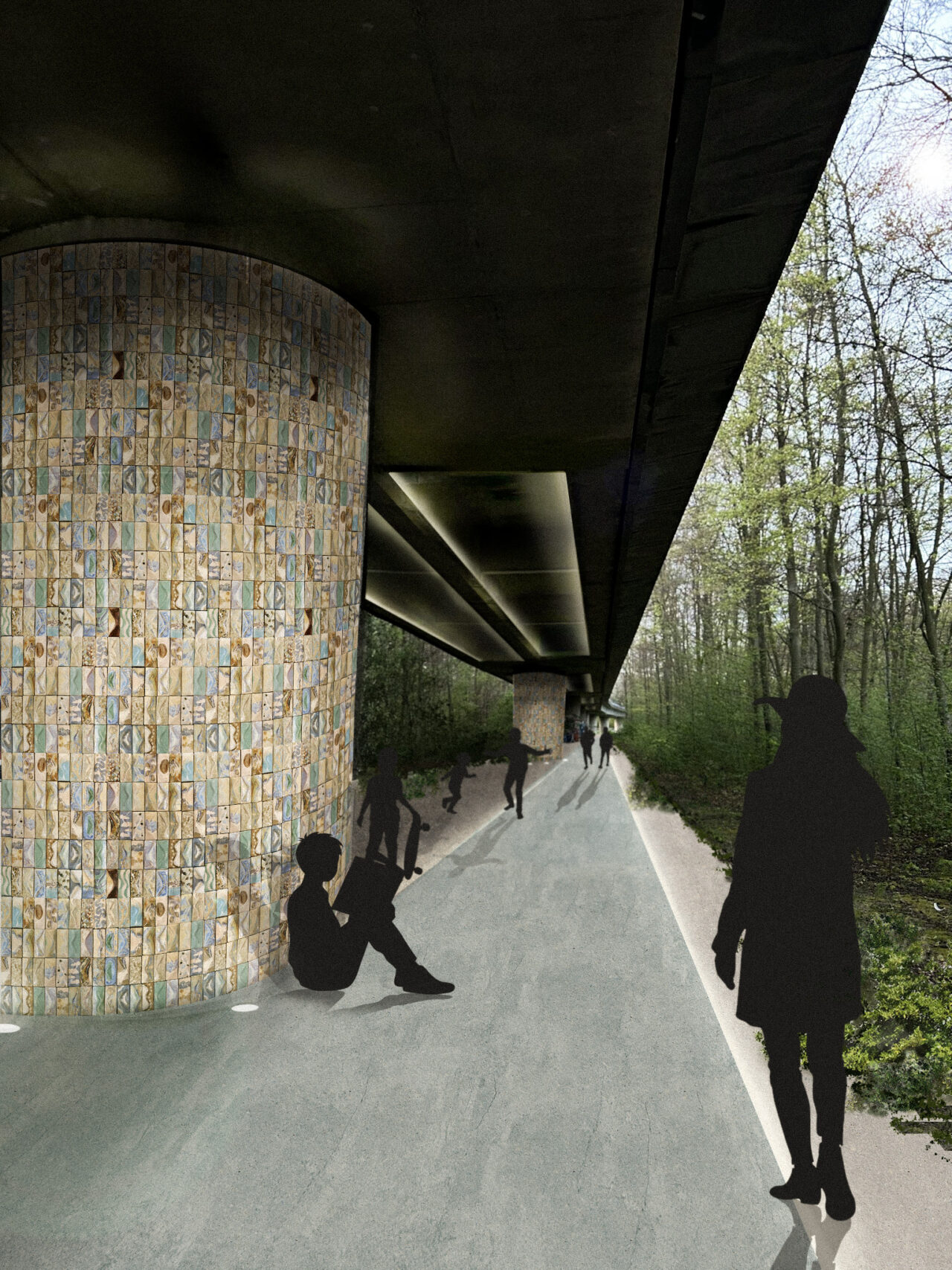RevitaTiles

Project details
- Year
- 2024
- Programme
- Bachelor – Spatial Design
- Practices
- Honours Programme
- Minor
- Visual Culture
ceramic tiles as a transformation tool for public space
Between art and architecture, there is a thin line that should be erased allowing both to intertwine with each other in a collaborative manner. Ceramics has applications in both, however, here in this project it becomes a representation of one and the other at the same time. The idea of using ceramic as a material came to my mind when I was listening to an interview with an artist Sandy Brown.
Once she said
‘’Clay is one of the most sensual materials that we could use in public space’’
‘’And we should’’ – I Thought.
Following the above, this project reveals how ceramic tiles can be used as a transformation tool in public spaces. What is more, it also touches on the impact of engaging local communities in creating these spaces together.
The design is a proposal for a transformation of a neglected area in Rotterdam’s Zuiderpark using pillars from the metro as points that can draw people’s attention to the spot. The aim of this intervention is to give people ‘’a canvas that they can paint on’’. A huge part of the design was the usage of clay, more specifically ceramic tiles, that I previously designed, made and fired. After that I organized a workshop in CultuurWerkplaats Tarwewijk, where together with people living in the area we glazed them, creating various patterns and color combinations. Later in the design process, I created an example wall of how the tiles could look like as a mural on the pillar of the above-mentioned metro line.





LOCATION
Chosen location in Rotterdam Zuid is an example of urban planning discontinuity. An urban gap, a black hole of the map, a break in the pavement line, this is how I would describe the spot. You can see the metro line bridge, on the sides of Zuidpark. On the right from the metro, there is a two-lane street, however it is separated by trees, creating a private feeling, thanks to
the enclosure. Considering the fact that there is a continuous pavement just right before and after it looks like an urban mistake. To walk from the previous metro station Slinge to Zuidplein you have to cross the street, because of the lack of pavement underneath the viaduct. Although, there are signs that people walk underneath anyway, such as the desired path. Rubbish, empty
bottles and cigarette packages indicate that some gatherings had been organized there in the past. To examine it, I visited the location a few times during the day in the morning but also in the evening. Some days I catched people walking there with groceries. Other days it was completely ghosted. Hence I decided to research the neighborhood more to see what can be done in the location or what is missing there. Followingly, I noticed a lot of the attention in the Rotterdam South is underlined on the metro line. Most of the main roads, bigger shops, street art and shopping malls are located
within walking distance from the metro stop or just right next to it. What got my attention was the selection of different murals placed on the pillars spreading from Rijnhaven to Zuidplein. Then all the magic of art intervention disappears. The further from the center you go the less art in public space you see. Based on my analysis not all of the pillars are painted, although some kind of repetition is noticeable. Every few hundred meters another group of columns has an eye-catching decoration. Following that principle, I realized the distance between each of the groups and between the last
art intervention and my location is more less the same. It inspired me to use this existing pattern and create a mural also on the pillars as a continuation. The idea is to enliven the spot without adding anything that would ruin the atmosphere or will not suit the characteristics of the neighborhood. Another aspect I took under account was that I did not want to copy what has been
already done there, hence I decided I will merge ceramic into it and create a mural fully from ceramic tiles.